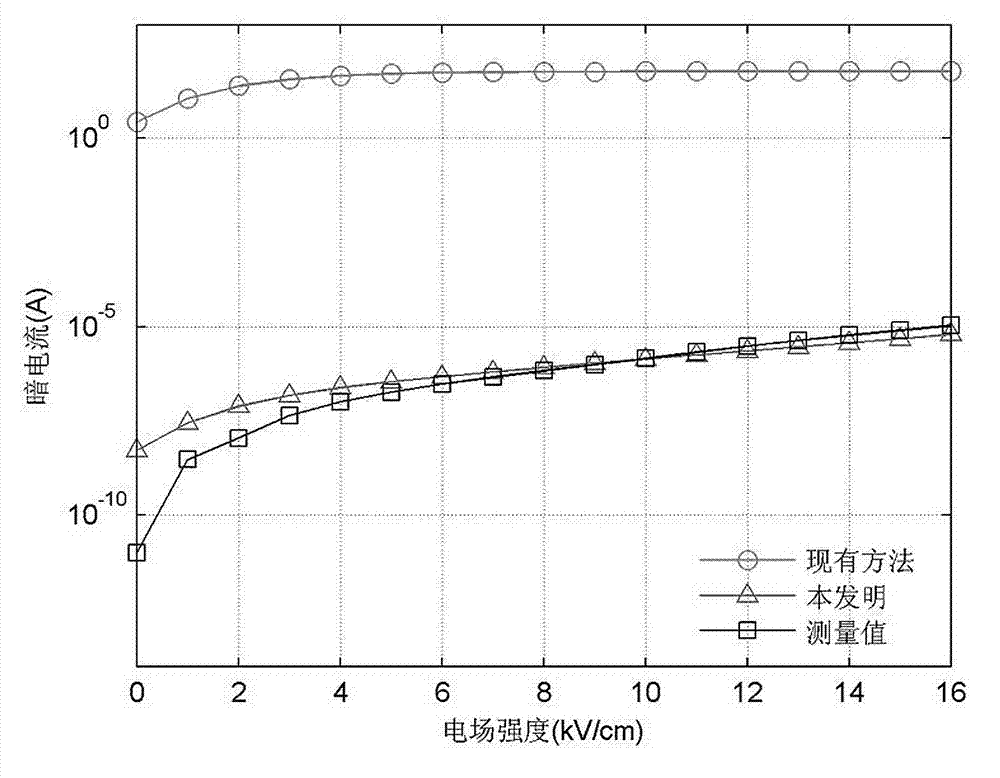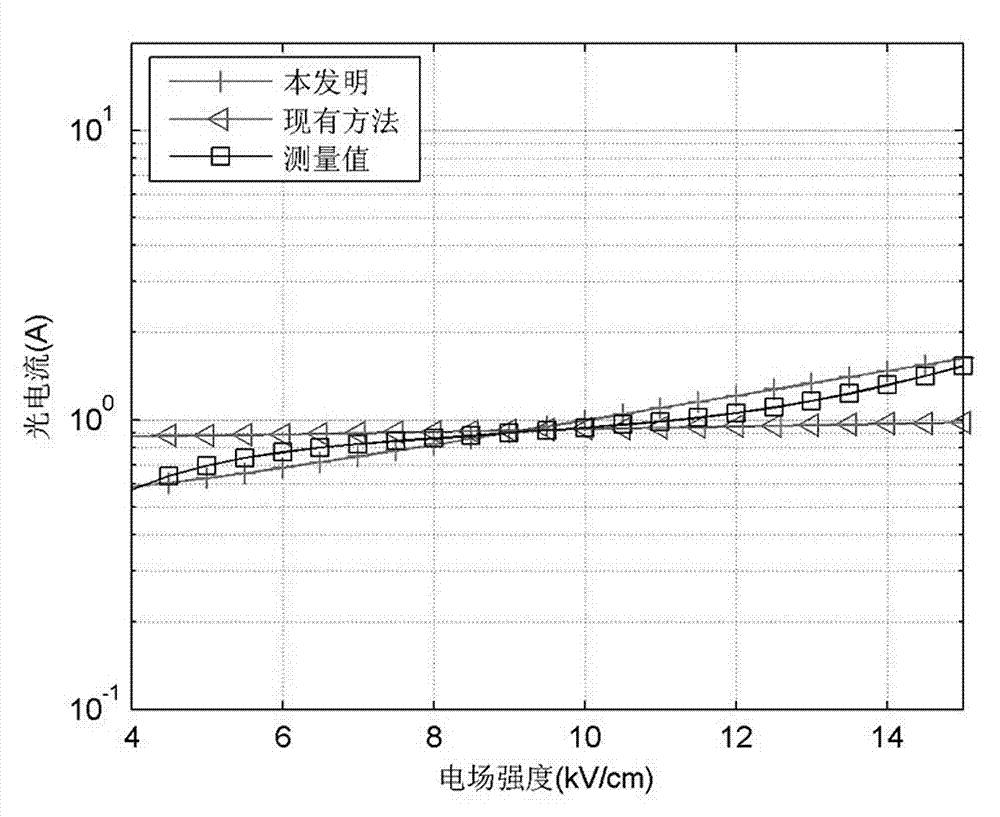Method for characterizing responsivity of quantum dot infrared detector
A technology of infrared detectors and quantum dots, which is applied in the fields of instruments, measuring electricity, measuring devices, etc., can solve the problems of unreasonable response characteristics of detectors, and the prediction and evaluation of response rate performance of difficult detectors.
- Summary
- Abstract
- Description
- Claims
- Application Information
AI Technical Summary
Problems solved by technology
Method used
Image
Examples
Embodiment Construction
[0026] In the embodiment of the present invention, a quantum dot infrared detector with an n-i-n structure is used.
[0027] For the quantum dot infrared detector with n-i-n doped structure, the carriers are electrons, so the dark current density can be obtained by counting the number of mobile carriers in the potential barrier, that is, the number of mobile electrons, written as:
[0028] (1)
[0029] in, is the basic charge of the electron, is the electron drift velocity in the potential barrier, is the three-dimensional density of electrons in the potential barrier, written as:
[0030] (2)
[0031] in, is the electron effective mass, is the Boltzmann constant, is the temperature, is the normalized Planck constant, is the excitation energy.
[0032] By introducing a continuum coupling model, the electron transport in quantum dot infrared detectors is divided into micro-electron transport and nano-electron transport...
PUM
 Login to View More
Login to View More Abstract
Description
Claims
Application Information
 Login to View More
Login to View More - R&D
- Intellectual Property
- Life Sciences
- Materials
- Tech Scout
- Unparalleled Data Quality
- Higher Quality Content
- 60% Fewer Hallucinations
Browse by: Latest US Patents, China's latest patents, Technical Efficacy Thesaurus, Application Domain, Technology Topic, Popular Technical Reports.
© 2025 PatSnap. All rights reserved.Legal|Privacy policy|Modern Slavery Act Transparency Statement|Sitemap|About US| Contact US: help@patsnap.com



